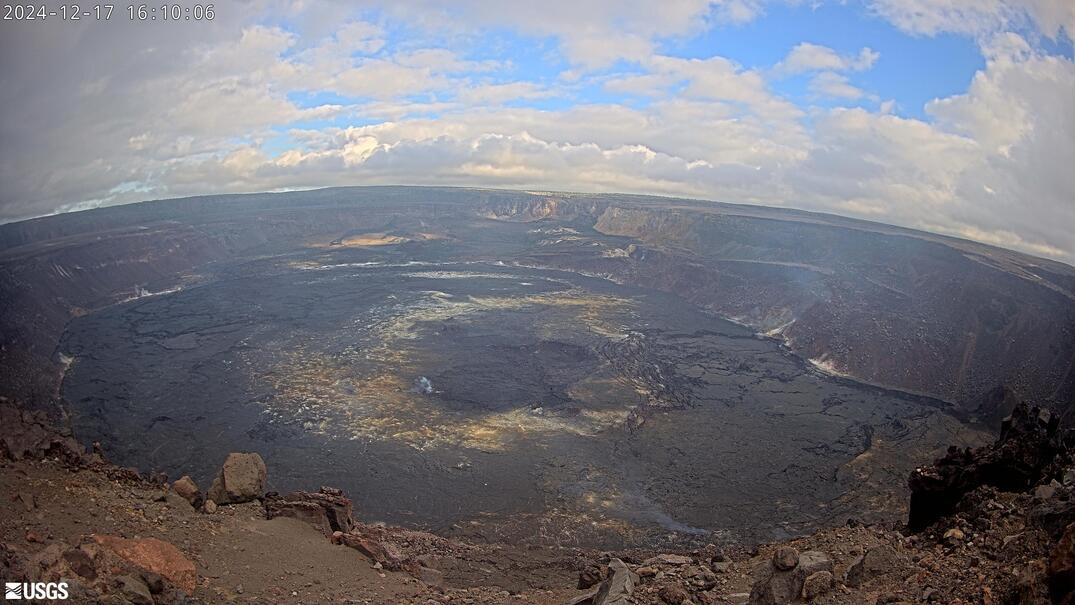(BIVN) – Kīlauea volcano is not erupting. Although the USGS Volcano Alert Level remains at ADVISORY, the USGS Hawaiian Volcano Observatory says an uptick in unrest at the summit has prompted scientists to switch from providing weekly Kilauea updates to daily updates.
“Starting in the early morning of Saturday December 14, there have been several modest upticks in seismic activity underneath the volcano’s summit, lasting from an hour to a few hours, often accompanied by minor inflation,” the USGS HVO wrote on Tuesday. “Continued summit inflation and increased seismic activity suggests an increasing amount of magma is being stored underneath the summit area.”
The USGS HVO added that the daily updates will begin on Wednesday, December 18.
While earthquakes have increased at the summit, seismicity remains low in the East Rift Zone and Southwest Rift Zone.
From the Tuesday update by the USGS HVO:
Summit Observations: Earthquake activity at Kīlauea’s summit region was low in the first half of the last week. Starting in the early morning of Saturday December 14, there have been a few periods of increased seismicity activity, lasting from one to a few hours, often accompanied by minor inflation as recorded at the tiltmeter at Uēkahuna, northwest of Kaluapele, the summit caldera, and tiltmeter at Sand Hill, southwest of Kaluapele. Overall, there were about 250 earthquakes underneath the summit, most at depths of 1 to 3 miles under the surface, and most below magnitude-2.0. Since the September eruption in the East Rift Zone, there have been sustained rates of inflation at the summit. The most recent measurement of the sulfur dioxide (SO2) emission rate from the summit was approximately 70 tonnes per day on October 17, a value representative of noneruptive conditions at Kīlauea. Unfavorable weather and wind conditions have delayed acquisition of a new SO2 emission rate measurement.

Above Top: Number of earthquakes per day during the past week (blue bars). The red line is the cumulative moment (energy) release. Bottom: Depth of earthquakes during the past week in the area shown on the map above. Depth is reported relative to sea level, which is equal to a depth of zero on the above plot. On both figures, circle-size represents magnitude, and color indicates depth. (USGS graphs)
Rift Zone Observations: Shallow earthquake counts in the upper and middle East Rift Zone (ERZ) remain at low levels. There were approximately 70 located earthquakes in the middle ERZ, and approximately 40 in the upper ERZ as well, with most below magnitude-2.0. Deformation remains steady in the ERZ, as recorded by GPS instruments and tiltmeters. There are no indications of any changes downrift in the lower East Rift Zone.
Kilauea last erupted in September of this year, when lava covered more than 217 acres at Nāpau Crater on the middle East Rift Zone. The eruption lasted only five days.


by Big Island Video News4:59 pm
on at
STORY SUMMARY
HAWAIʻI VOLVANOES NATIONAL PARK - The USGS Hawaiian Volcano Observatory says it will switch from weekly updates to daily updates starting on Wednesday, December 18.